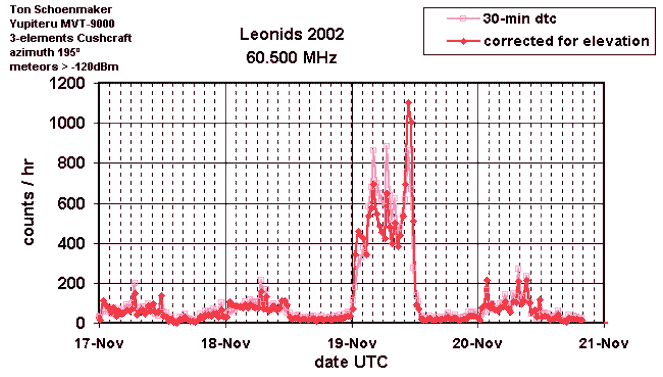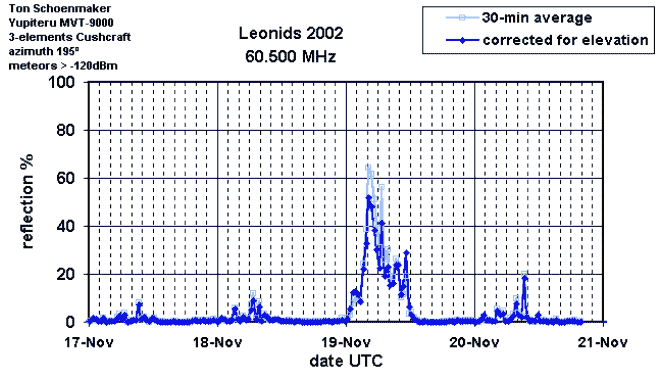Observer: Ton Schoenmaker
Location: Roden, Netherlands (06 26' E, 53 08' N)
Frequency: 60.500 MHz
Transmitter: French TV channel L3 (video); transmitter in Carcassonne (100 kW),
distance ~1100 km
Antenna: 3-elements horizontal Cushcraft 50 MHz Yagi tuned to 55.3 MHz;
geographical azimuth 195 degrees (SSW)
Receiver: Yupiteru MVT-9000 in USB mode; sensitivity 0.5 uV at 12 dB S/N
Observing: 800 Hz audio signal from earphone socket was rectified, digitised
and fed into a PC via the parallel computer port. HP VEE was used
to process the digitised signal and to store 15-minutes counts of
reflections stronger than 0.22 uV (-120 dBm). Also for all
individual meteors date, time, duration (dead time) and maximum
signal are stored.
Like previous years counting of the Leonid reflections was difficult.
This was due to many long duration reflections caused by fast and bright Leonids.
Therefore the dead-time corrected counts (Figure 1) as well as the hourly dead-time percentages (Figure 2) are given.
Both figures show also the data corrected for radiant elevation.
Although the results may have been influenced by individual long reflections,
both figures show peaks on November 19 around 4h15m, 7h00m and 10h45m UTC.
Ton Schoenmaker, Dutch Meteor Society and IMO
Meester Homanstraat 8, NL 9301 HP Roden, Netherlands
E-mail: schoenmaker@ASTRON.nl
Call: PA0EFA

Figure 1 (above). Dead-time corrected counts for 30-minutes periods of Leonids. The light red data are only corrected for dead-time, the bright red blue data are also corrected for elevation of the radiant.

Figure 2 (above). Reflection percentages for 30-minutes periods of Leonids. The light blue data are uncorrected, the dark blue data are corrected for elevation of the radiant.